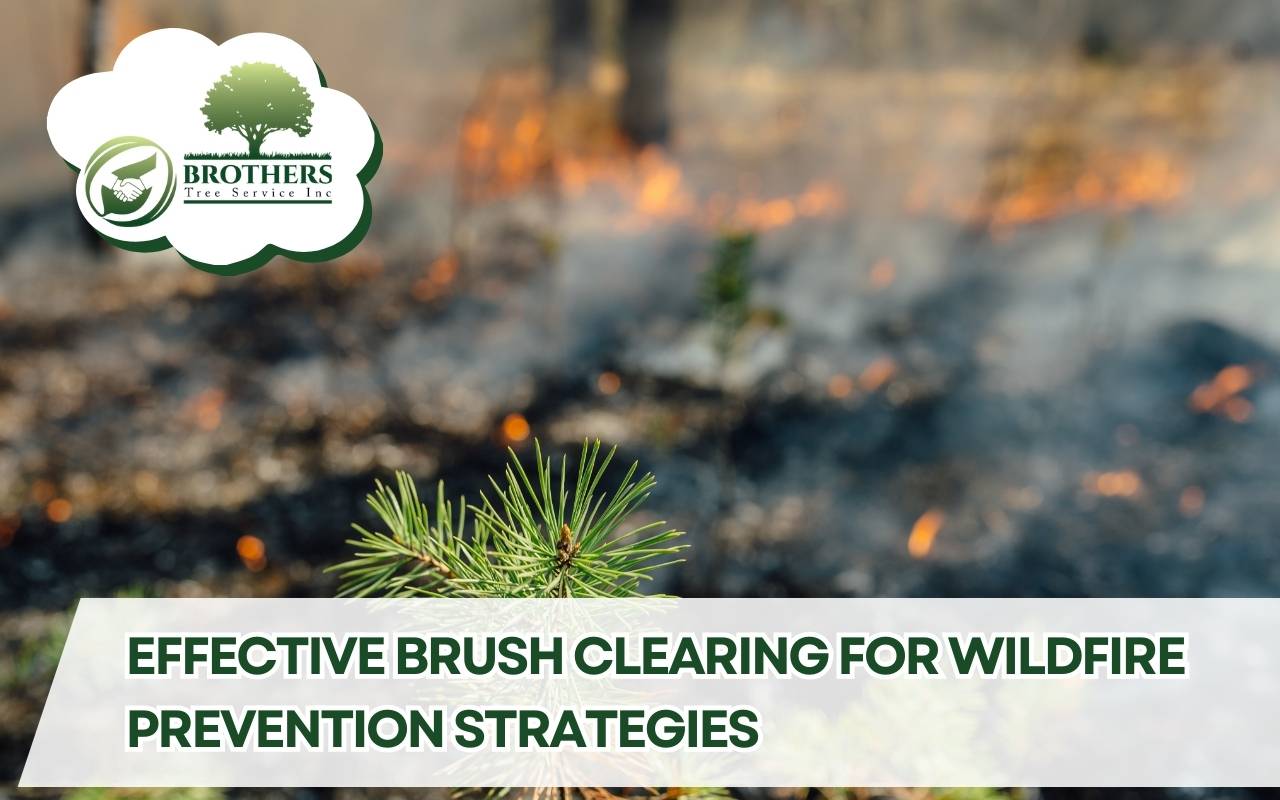
In a world increasingly aware of wildfire risks, proactive strategies are crucial. Therefore, brush clearing for wildfire prevention reduces threats to homes and ecosystems. By applying these practices, communities build resilience while minimizing destruction.
Every year, thousands of acres are lost to preventable wildfires. Moreover, by removing fuel loads and managing vegetation, neighborhoods create defensible spaces that slow fire spread. This guide explores proven strategies to protect your property and strengthen collective wildfire defense.
The Importance of Brush Clearing in Wildfire Prevention
Brush clearing for wildfire prevention forms the foundation of effective fire management. Overgrowth and dry debris act as dangerous fuel for advancing flames. Removing these elements disrupts fire pathways and reduces fire intensity.
Additionally, this practice fosters healthier ecosystems by easing competition among plants. With thoughtful execution, brush clearing protects communities while encouraging biodiversity and resilience in local landscapes.
Understanding the Role of Fuel Loads in Fire Behavior
Fuel loads consist of combustible materials, from dry grasses to heavy logs. Each plays a different role in fire behavior. By reducing them, brush clearing for wildfire prevention significantly alters wildfire spread and intensity.
Since weather and terrain cannot be controlled, managing fuel becomes essential. In fact, a proactive approach prevents crown fires and creates manageable surface fires.
Identifying High-Risk Areas for Brush Clearing
- Zones near structures
- Escape routes
- Steep terrain with dense vegetation
- Areas with ladder fuels beneath trees
- Human activity zones with debris
Targeting high-risk areas ensures brush clearing delivers maximum safety benefits. Furthermore, efficient mapping and site assessments guide strategic clearing decisions.
Tools and Equipment for Effective Brush Clearing
- Hand tools: loppers, saws, and rakes
- Powered equipment: chainsaws and brush cutters
- PPE: helmets, gloves, and protective clothing
- Transport aids: trailers and wheelbarrows
Using proper tools enhances efficiency and safety. However, always balance speed with protective practices during clearing work.
Techniques for Safe and Efficient Brush Clearing
Organize work plans from top to bottom: start with ladder fuels, then mid-story brush, and finally ground debris. Apply cut-and-scatter for decomposition or cut-and-haul for complete removal. Additionally, prioritize spacing and hydration for worker safety.
Creating Defensible Space Around Structures
- Zone 1: 0–5 feet, remove all combustibles
- Zone 2: 5–30 feet, prune trees and thin shrubs
- Zone 3: 30–100 feet, reduce ground fuels
Defensible spaces created through brush clearing for wildfire prevention align with safety codes. Maintaining them year-round enhances long-term property protection.
For expert help, explore our tree care services or contact us today.
Incorporating Native Plant Landscaping in Brush Clearing Strategies
Native plants resist ignition and demand fewer resources. They add beauty while improving fire safety. Incorporating species like manzanita and California lilac supports a safer, eco-friendly landscape. Therefore, combining brush clearing for wildfire prevention with fire-resistant planting ensures sustainable results.
Learn more from our tree care tips guide for San Diego homeowners.
Collaborating with Neighbors and Local Authorities
Wildfires cross property lines. Consequently, community-wide brush clearing for wildfire prevention builds stronger, shared defenses. Work with neighbors, associations, and fire districts to coordinate schedules. Local agencies often provide support, assessments, and guidance on best practices.
For seasonal insights, visit our all-seasons tree care guide.
Monitoring and Maintaining Cleared Areas
Brush clearing is an ongoing task. Vegetation regenerates rapidly, demanding consistent monitoring. Regular inspections, scheduled maintenance, and record-keeping ensure lasting effectiveness. Moreover, community patrols and mapping tools also support prevention efforts.
FAQs About Brush Clearing for Wildfire Prevention
1. Why is brush clearing important for wildfire prevention?
It reduces fuel loads and creates defensible spaces that slow or stop wildfire spread.
2. How often should brush clearing be done?
At least twice a year, ideally before and after the fire season.
3. What areas should be prioritized?
Zones near homes, escape routes, and slopes with dense vegetation require immediate attention.
4. Can brush clearing improve ecosystem health?
Yes, it reduces competition among plants, supporting stronger, disease-resistant native species.
5. Should I hire professionals for brush clearing?
Yes, experts ensure safety, efficiency, and compliance with local fire codes.
The Ongoing Commitment to Brush Clearing for Wildfire Prevention
Wildfire prevention requires consistent dedication. Brush clearing for wildfire prevention is both a reliable defense and an ecological investment. Stay proactive, maintain defensible spaces, and coordinate with neighbors to safeguard communities from wildfire threats.
Ready to protect your property? Schedule expert tree trimming services in San Diego today.
